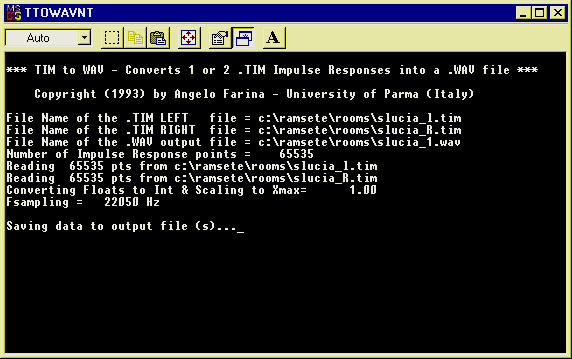 Audio Converter
Audio Converter Audio Converter
Audio Converter |
This program, which is now free for registered Ramsete users, allows for easy conversion between different file formats. In particular, 4 conversions are possible:
The main purpose of AudioConverter is to transform the energetic, 10-octave-bands impulse responses produced by Ramsete in a single, wide-band, pressure impulse response, suitable for being directly compared with measured IRs or for auralization purposes through a convolution software.
This task is performed by choosing the proper file names, and the receiver number, as in this picture:
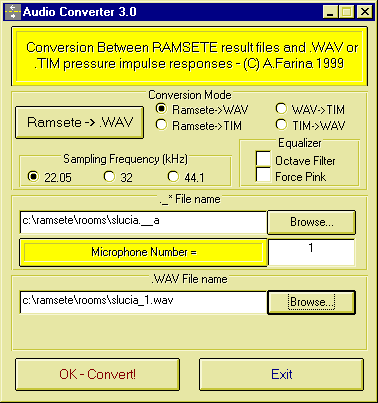
It is also possible to choose the sampling frequency, and two Equalizer options:
Octave Filter
Force Pink
The first option displays a sort of octave-band graphic equalizer:
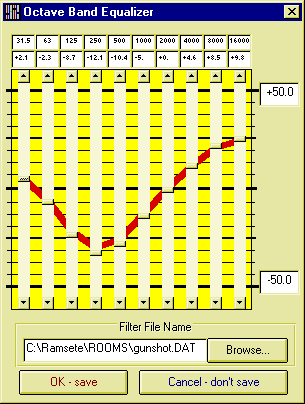
The equalizer settings must be saved in a proper .DAT (ASCII) file, for being employed during the conversion. This allows for compensating the frequency response, and making it similar, for example, to a gun shot or to the response of a generic sound source.
The second options makes the conversion process to start from a pink noise signal instead of white. The following warning is displayed:
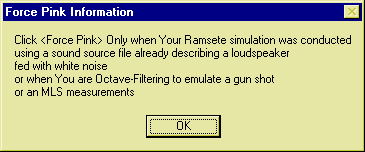
In most cases, none of these two equalization options are required. Furthermore, for comparison with experimental results, it is far better to properly equalize the latter, and to leave the Ramsete simulation untouched.
When the OK-Convert button is pressed, a Fortran Character-Mode application is launched and briefly displayed. This is the executable which actually performs the conversion. Please note that this program can also be launched directly from the DOS prompt.
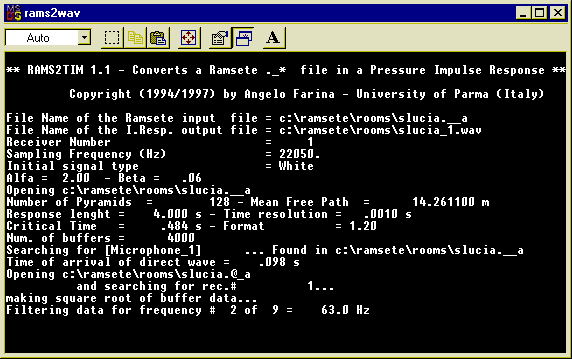
The second function of Audio Converter is to switch between .WAV and .TIM files. Let we look first at the first conversion, from .WAV to .TIM. Selecting this mode, the interface of Audio Converter changes slightly:
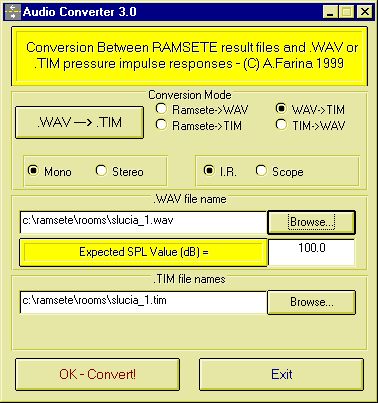
In this case, it is possible to choose to convert a stereo .WAV in two separate .TIM files, and to set the flag for the measurement mode in MLSSA (cross-correlation or scope). Furthermore, it is possible to "calibrate" the impulse response, setting its overall SPL value. When the OK-Convert button is pressed, the separate character-mode program WTOTIMNT.EXE is launched:
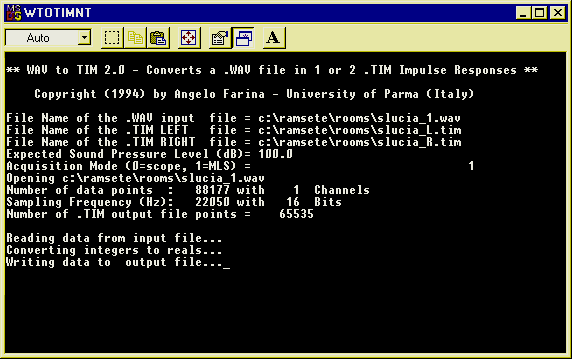
Also in this case the same program could also be launched directly from the DOS prompt.
The opposite conversion is quite the same. Selecting the .TIM to .WAV conversion, Audio Converter appears this way:
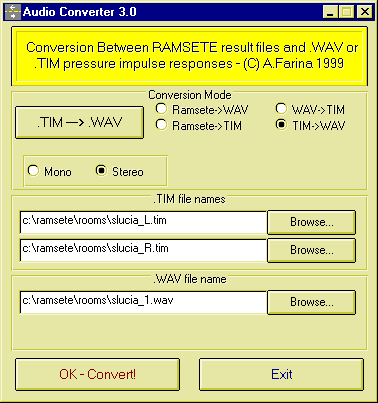
In this case, the Stereo mode was selected, which packs two IRs in a single stereo .WAV file. Also this conversion is performed by a separate Fortran character-mode executable, which can be launched automatically from Audio Converter, or manually from the DOS prompt:
